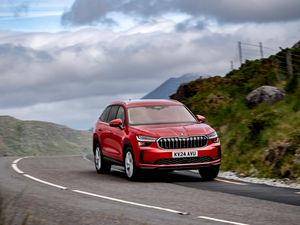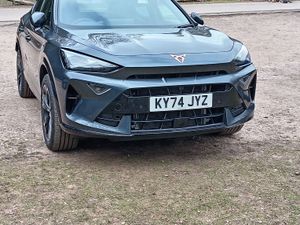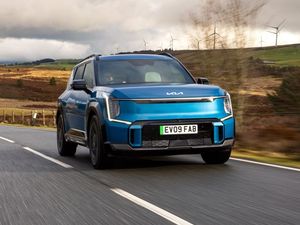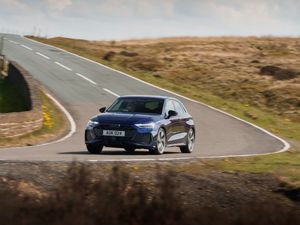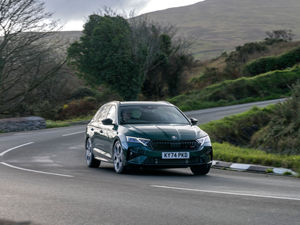First Drive: The Hyundai i10 N Line brings a sporty edge to the supermini
Hyundai has given its supermini a sporty makeover, but it has excellent rivals at this price point. Darren Cassey finds out how it stacks up.
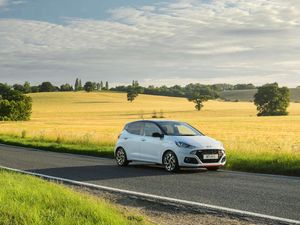
What is it?

When Hyundai launched its performance N brand a few years back with the i30 N, the industry was shocked that the South Korean firm had burst onto the scene with a genuine best-in-class contender. The branding might be young, but Hyundai is clearly keen to make it well known, because it launched a performance-inspired N Line trim level.
That’s where this i10 N Line comes in, getting a punchier engine than seen elsewhere in the i10 range and a hint of fun sportiness to the driving experience. Its biggest problem, though, is the almost-identically priced Volkswagen Up GTI, which has decades of performance branding heritage and a fantastically punchy motor. The i10 has a tough fight on its hands.
What’s new?

As part of the N Line upgrade the i10 gets plenty of interior and exterior styling and equipment upgrades, as well as chassis tweaks to give the car a sportier edge. On this point, there is an increased spring rate, longer rear bump stops, and new rear shock absorbers to help with handling.
The key change is the 1.0-litre turbocharged petrol engine that’s under the bonnet. Elsewhere in the range, there are less powerful engines that have a focus on efficiency around town rather than being particularly fun to drive. This engine hopes to improve on the latter.
What’s under the bonnet?

So, that engine. It has 99bhp and 172Nm of torque, resulting in a 0-60mph time of 10.3 seconds and a top speed of 115mph, with fuel economy of 52.3mpg and CO2 emissions of 123g/km.
While it’s more gutsy than anything else in the range, it doesn’t quite have the fizzy character you might hope for from a fun-focused model. Put your foot down and there’s a mild surge, but nothing that hints at its sporty character, while the sound is subdued.
Contrast that to the Up GTI, and while that only has marginally more power, it feels far punchier under acceleration. The German’s engine has a real mini hot hatch feel to it, beating the South Korean in this round.
What’s it like to drive?

We got the chance to drive a standard i10 back to back with the N Line, and the key difference between the two is the ride quality. While the standard model is soft and comfortable over potholes and ruts in the road, the N Line is noticeably more coarse. It’s nicely damped, though, so while you definitely jiggle about more there are no bangs and crashes in the cabin.
As for handling, it certainly leans more towards sporty than the standard model, with the body weight feeling more in control through a corner. It’s let down slightly by the lazy steering, which doesn’t feel too quick to respond to inputs when pressing on.
This latter point is, again, something the Up GTI does better, but when it comes to its ride it’s less clear cut. The VW bumps and jiggles about when pressing on which reduces confidence, making the i10 more comfortable to hussle down a B-road.
How does it look?

The Hyundai i10 is a great-looking supermini, with cute styling that’s arguably one of the best in class. The N Line does a great job of not messing with that, but introducing a hint of aggression that suits the sporty branding.
Up front, the cool circular fog lights have been replaced by straight-edged slats, while three red lines in the grille give a further clue to the sporting intent. Other styling cues unique to the N Line include the 16-inch alloy wheels, dual chrome exhaust tips, rear LED combination lights and red accents on the outside, while inside there are cloth seats with red stitching, black roof liner, and N badging throughout.
What’s it like inside?

The interior of the N Line is great, and feels every bit worthy of its relatively high supermini price tag. There are fantastic quality materials used throughout, the infotainment screen is quite small but functional and responsive, and the design is modern and uncluttered, while retaining physical buttons where necessary. It’s a massive upgrade on the Up, which relies on a phone cradle in place of a traditional infotainment system.
It’s small, of course, but surprisingly spacious for the class. Tall drivers will often struggle to get comfortable in rivals, but the i10 has a pretty good driving position. Meanwhile those in the back will find legroom comparable to larger cars, and the same can be said of boot space, too.
What’s the spec like?

Considering it’s quite a jump in price over other i10 models, Hyundai has seen fit to equip the N Line very well. On top of the improved engine, chassis enhancements and styling upgrades, it also gets air conditioning, LED daytime running lights, rear privacy glass, and cruise control.
The infotainment system is hugely impressive for a car in this class. It’s an 8.0-inch touchscreen with bluetooth connectivity, and integration with Android Auto and Apple CarPlay.
One optional extra that might be worth buying is the Tech Pack, which adds navigation, Bluelink and wireless charging – though it’s priced quite steep at £1,000.
Verdict

The Hyundai i10 N Line has an interesting recipe. It has sporty chassis upgrades, a slightly more aggressive appearance, and plenty of equipment to justify its £16,000 price tag. If you look at it as Hyundai intends – a sporty-looking but not performance-focused supermini – it makes a lot of sense, particularly because it’s well-equipped. If you don’t mind the stiffer ride, that is.
However, at this price point, going head-to-head with the Up GTI, if you’re looking for something that feels like a mini hot hatch, the Hyundai just doesn’t quite stack up.

